When To Travel To Philippines? The Philippines, with its stunning beaches, vibrant culture, and diverse landscapes, is a dream destination for many. SIXT.VN is here to help you navigate the best times to visit this tropical paradise, ensuring you experience the most unforgettable adventures. Whether you’re seeking perfect beach weather, festive celebrations, or thrilling outdoor activities, we’ve got you covered. Let’s explore the ideal times for your Philippine getaway, with insights into travel planning, cultural immersion, and maximizing your travel budget.
1. What Is The Best Time Of Year To Visit The Philippines For Good Weather?
The best time to visit the Philippines for good weather is during the dry season, which runs from December to May. These months offer the most sunshine and minimal rainfall, ideal for beach activities, island hopping, and exploring the outdoors.
During this period, you can expect clear skies and comfortable temperatures, making it perfect for enjoying the country’s stunning beaches and natural attractions. Early November or mid-January to February are your best bets to avoid the busy year-end holidays. Expect to shell out more and rub elbows during Holy Week (usually in March or April), local summer breaks and long weekends, when tourists descend to the most popular beaches en masse.
Here’s a breakdown of what to expect each month:
- December to February: These are the coolest and driest months, perfect for hiking and exploring mountain regions.
- March to May: These months are the warmest, offering plenty of sunshine for beachgoers.
2. What Is The Cheapest Month To Travel To The Philippines?
The cheapest months to travel to the Philippines are during the off-peak season, from June to October. This period coincides with the rainy season, which means lower prices on accommodations, flights, and tours.
While the weather may be less predictable during these months, budget travelers can take advantage of the reduced rates and enjoy popular destinations without the usual crowds. According to the Philippine Statistics Authority, tourism-related establishments often offer significant discounts during the low season to attract more visitors.
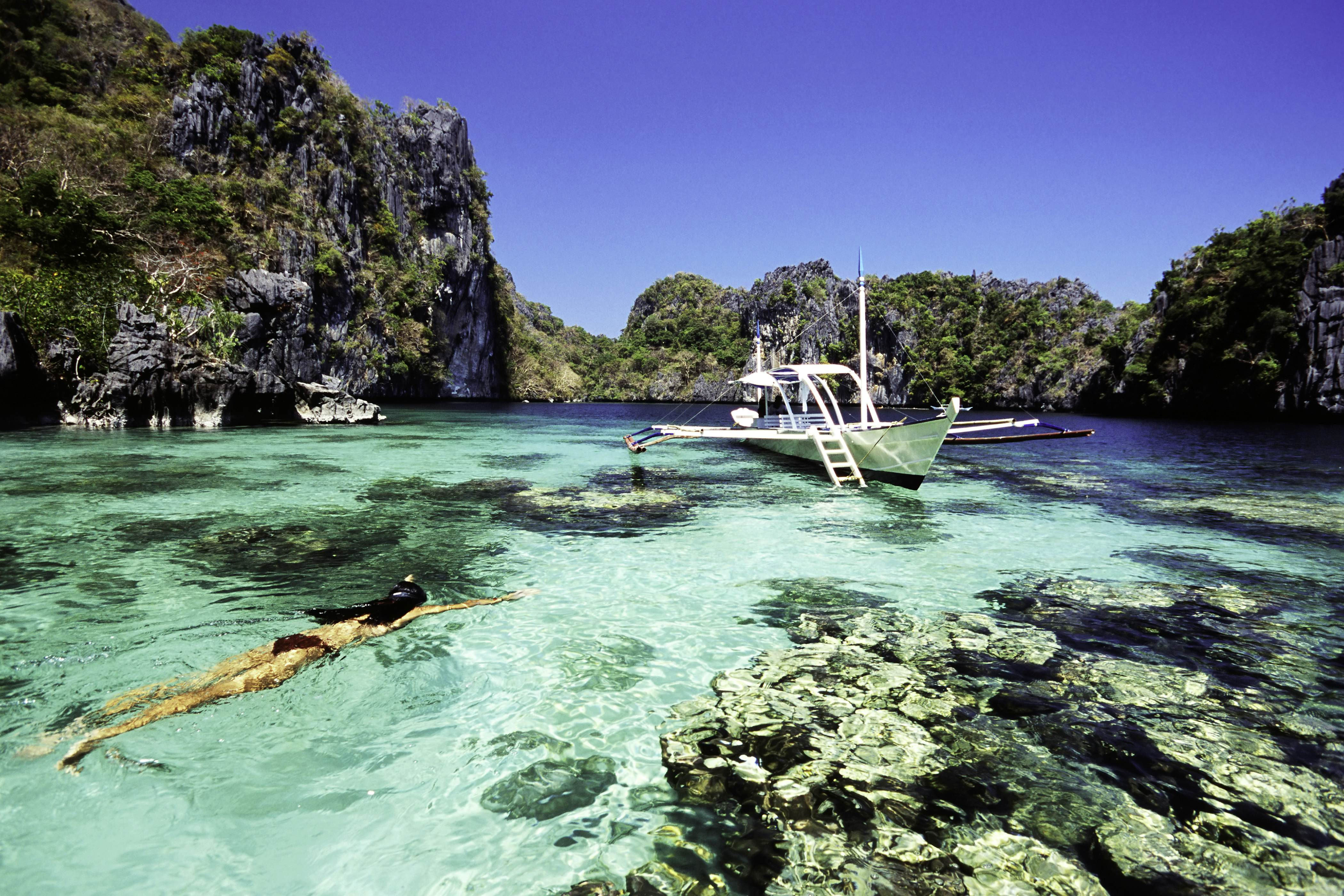 A woman snorkels in clear water next to a boat with pontoons in a rocky lagoon
A woman snorkels in clear water next to a boat with pontoons in a rocky lagoon
Tips for traveling during the off-peak season:
- Stay updated on weather forecasts: Keep an eye on weather updates to avoid potential typhoons and heavy rainfall.
- Choose less storm-prone areas: Opt for destinations like Palawan, Boracay, Cebu, and Mindoro, which are less susceptible to severe weather conditions.
- Pack accordingly: Bring rain gear, such as umbrellas and waterproof jackets, to stay comfortable during occasional showers.
3. When Is The Best Time To Visit The Philippines For Diving?
The best time to visit the Philippines for diving is from December to April. During these months, the seas are calm, and the visibility is excellent, providing ideal conditions for exploring the country’s rich marine life.
Many top diving spots, such as Tubbataha Reefs Natural Park, are only accessible during this period. Calm seas and clear skies make visibility excellent, while the warmer water makes it easier to encounter marine life. December to March is the best time to go wreck-diving in Coron, Palawan. Even if you don’t dive, you can spot shipwrecks from above while snorkeling. According to PADI, the Philippines is renowned for its diverse dive sites, offering experiences ranging from wreck diving to reef exploration.
Here are some popular diving destinations and their optimal visiting times:
- Coron, Palawan: December to March for wreck diving.
- Tubbataha Reefs Natural Park: Mid-March to mid-June for liveaboard trips.
- Puerto Galera, Mindoro: Year-round, but best during the dry season for calmer seas.
4. When Is The Best Time To See Whale Sharks In The Philippines?
The best time to see whale sharks in the Philippines is from February to May. During these months, these gentle giants roam the waters of Donsol, Sorsogon, offering divers and snorkelers the highest chance to spot them in the wild.
Operators in Donsol follow responsible tourism practices, avoiding shark feeding to ensure the animals’ natural behavior and well-being. If a swim with whale sharks, the world’s largest fish, is on your bucket list, the first few months of the year are the best time to go for it. These gentle giants roam around the waters of Donsol, Sorsogon, from November to June, with February to May offering the highest chance for divers and snorkelers to spot them in the wild. Operators in Donsol don’t engage in shark feeding, which unfortunately remains a common practice in other parts of the country.
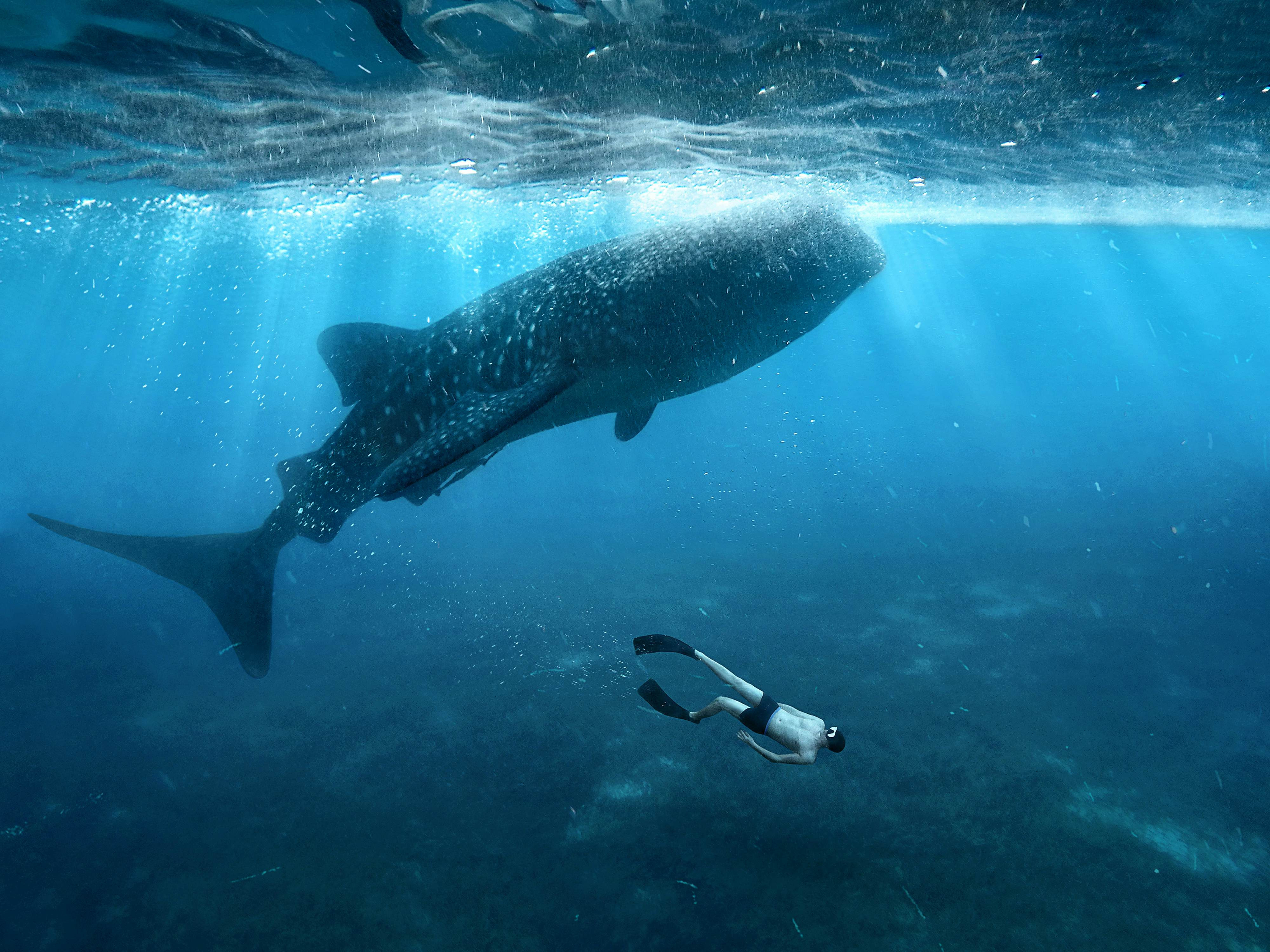 A snorkeler wearing fins dives deep underwater, beneath a giant whale shark
A snorkeler wearing fins dives deep underwater, beneath a giant whale shark
Tips for a responsible whale shark encounter:
- Choose reputable tour operators: Ensure that operators follow ethical guidelines and prioritize the safety of both tourists and whale sharks.
- Maintain a safe distance: Keep a respectful distance from the whale sharks to avoid disturbing their natural behavior.
- Avoid using flash photography: Refrain from using flash photography, as it can stress the animals.
5. When Is The Best Time To Visit The Philippines For Surfing?
The best time to visit the Philippines for surfing depends on the specific location and your skill level. There are two distinct surfing seasons based on the Philippines’ monsoon seasons. Known as amihan (or northeast monsoon season), December to March typically sees smaller waves on the west coast and is better for beginner surfers in areas like San Juan in La Union.
Here’s a breakdown:
- December to March (Amihan Season): Ideal for beginner surfers on the west coast, such as San Juan in La Union, known for its smaller waves.
- July to November (Habagat Season): Best for intermediate and pro surfers seeking larger waves on the eastern seaboard, including destinations like Siargao and Catanduanes.
Intermediate and pro surfers who want to catch epic waves on the eastern seaboard will want to time their trips from July to November. The habagat (southwest monsoon season – which also marks typhoon season) often brings bigger waves to top surfing spots like the Majestics in Catanduanes, Baler’s Point break, Siargao’s legendary Cloud Nine or far-flung Calicoan Island’s ABDC reef breaks. According to Surfing Philippines, Siargao is particularly famous for its Cloud Nine wave, attracting surfers from around the globe.
6. What Are The Major Festivals In The Philippines And When Do They Occur?
The Philippines is known for its vibrant festivals, which take place throughout the year.
Festivals take place throughout the year in the Philippines – with the most frenzied (and photogenic) happening in the first quarter of the year. These include Ati-Atihan in Kalibo (the grandaddy of all Philippine fiestas), Sinulog Festival in Cebu and Dinagyang in Iloilo, which all take place on the third and fourth Sundays of January. Held in honor of the Santo Niño, or Infant Jesus, these festivals feature parades, dancing, and raucous, weeklong street parties that draw crowds in the thousands.
Here are some of the most popular festivals and their corresponding dates:
| Festival | Location | Date | Description |
|---|---|---|---|
| Ati-Atihan | Kalibo | January (3rd Sunday) | Celebrated in honor of the Santo Niño, featuring colorful costumes, street dancing, and tribal music. |
| Sinulog | Cebu | January (3rd Sunday) | A grand religious procession and street parade, also dedicated to the Santo Niño. |
| Dinagyang | Iloilo | January (4th Sunday) | Similar to Ati-Atihan and Sinulog, with vibrant street performances and cultural shows. |
| Panagbenga | Baguio | February | A flower festival showcasing elaborate floral floats and street dances. |
| Pahiyas | Lucban | May 15 | A harvest festival where houses are decorated with colorful agricultural produce. |
| Christmas Season | Throughout | September to December | The world’s longest Christmas celebration, featuring festive decorations, events, and traditions. |
During the popular Panagbenga Flower Festival in February, the northern mountain town of Baguio becomes a blooming spectacle with grand floral parades and spectacular floats adorned with roses, chrysanthemums, sunflowers and everlasting buds. Lucban turns into a cornucopia of countryside charm come mid-May, when houses are adorned with fresh fruits, vegetables and kiping (colorful rice-paper wafers) during the Pahiyas Festival, a harvest event that honors the patron saint of farmers. According to the Department of Tourism, these festivals attract millions of tourists each year, contributing significantly to the country’s economy.
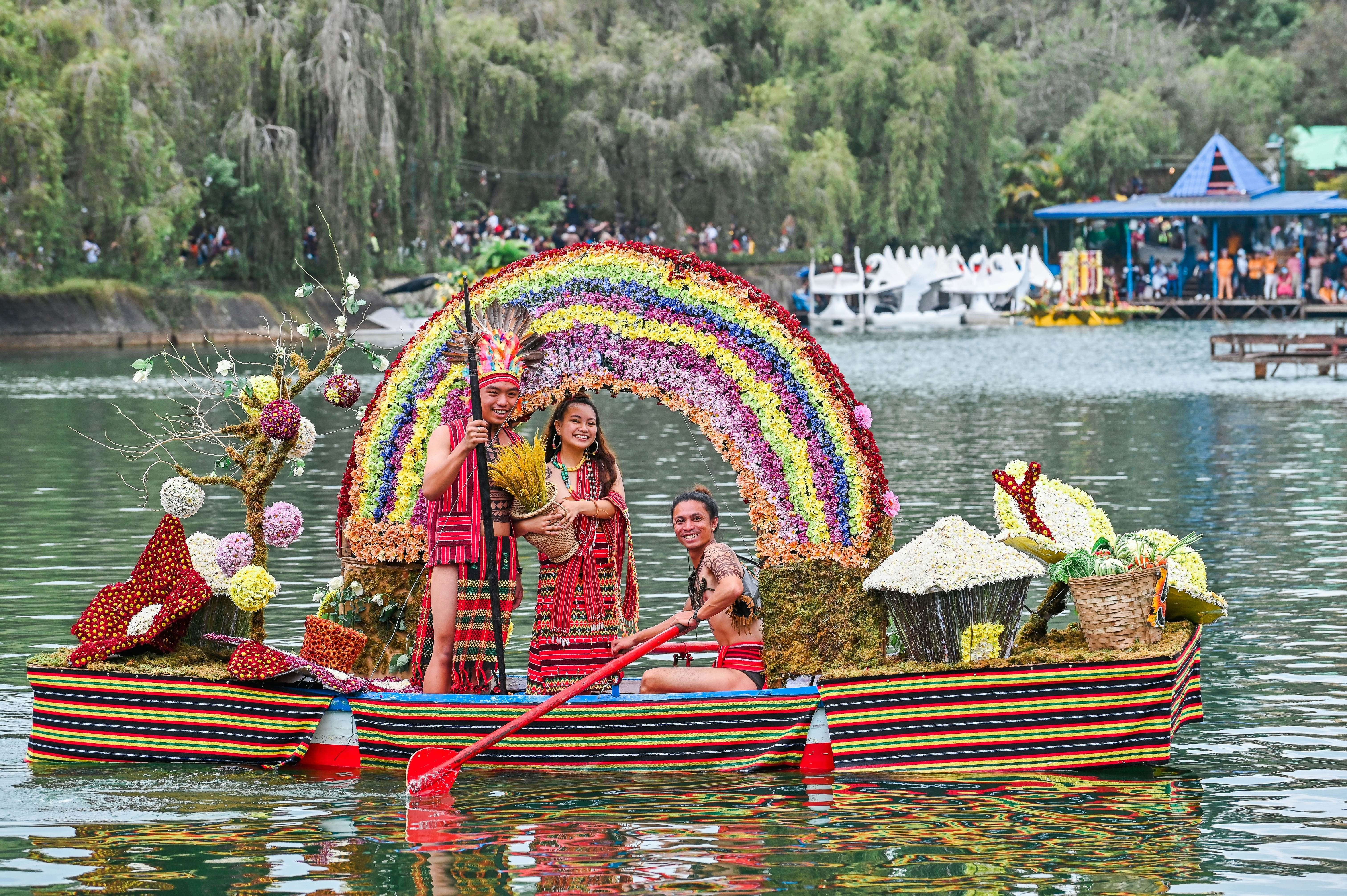 People in traditional costumes paddle a boat covered in displays of flowers on a lake during a festival
People in traditional costumes paddle a boat covered in displays of flowers on a lake during a festival
7. What Are The Best Hiking Destinations In The Philippines And When To Visit?
The Philippines offers numerous hiking destinations, each with its unique charm and challenges. December, January and February are the coolest, most pleasant months of the year to go hiking in the country’s gorgeous mountains. Most trails will be dry and safe to access, and the heat and humidity won’t be as high as in the summer months.
Here are some of the best hiking spots and their ideal visiting times:
| Mountain | Location | Best Time to Visit | Difficulty | Highlights |
|---|---|---|---|---|
| Mt. Pulag | Luzon | December to February | Moderate | Known as the “Playground of the Gods,” offering breathtaking views of a sea of clouds. |
| Mt. Pinatubo | Luzon | December to February | Easy | Features a stunning crater lake formed after the 1991 eruption. |
| Mt. Daraitan | Rizal | December to February | Easy | Accessible on day trips from Manila, with caves and rivers nearby to explore. |
| Mt. Makiling | Laguna | December to February | Moderate | Beautiful with dense forests and mossy, dew-kissed trails. |
Beginner-level mountains are accessible on day trips from Manila – such as Mt Daraitan in Tanay in Rizal, which features spectacular summit views with caves and rivers nearby to explore. Mt Makiling in Los Baños, Laguna, is beautiful, with dense forests and mossy, dew-kissed trails. While Mt Pinatubo Crater Lake can be visited year-round, December to February is the ideal window, before the trail gets steamy enough to cook eggs on its volcanic terrain. There’s a higher chance of witnessing the breathtaking sea of clouds in Mt Pulag (the “Playground of the Gods”) during these drier months. Hikers recommend February to March for clear skies and dreamy sunrise views (if you don’t mind single-digit temperatures at night). The summer months of March to May offer phenomenal views of the Milky Way, if you’re lucky enough to get a clear night. According to the Department of Environment and Natural Resources, these mountains are protected areas, preserving their natural beauty and biodiversity.
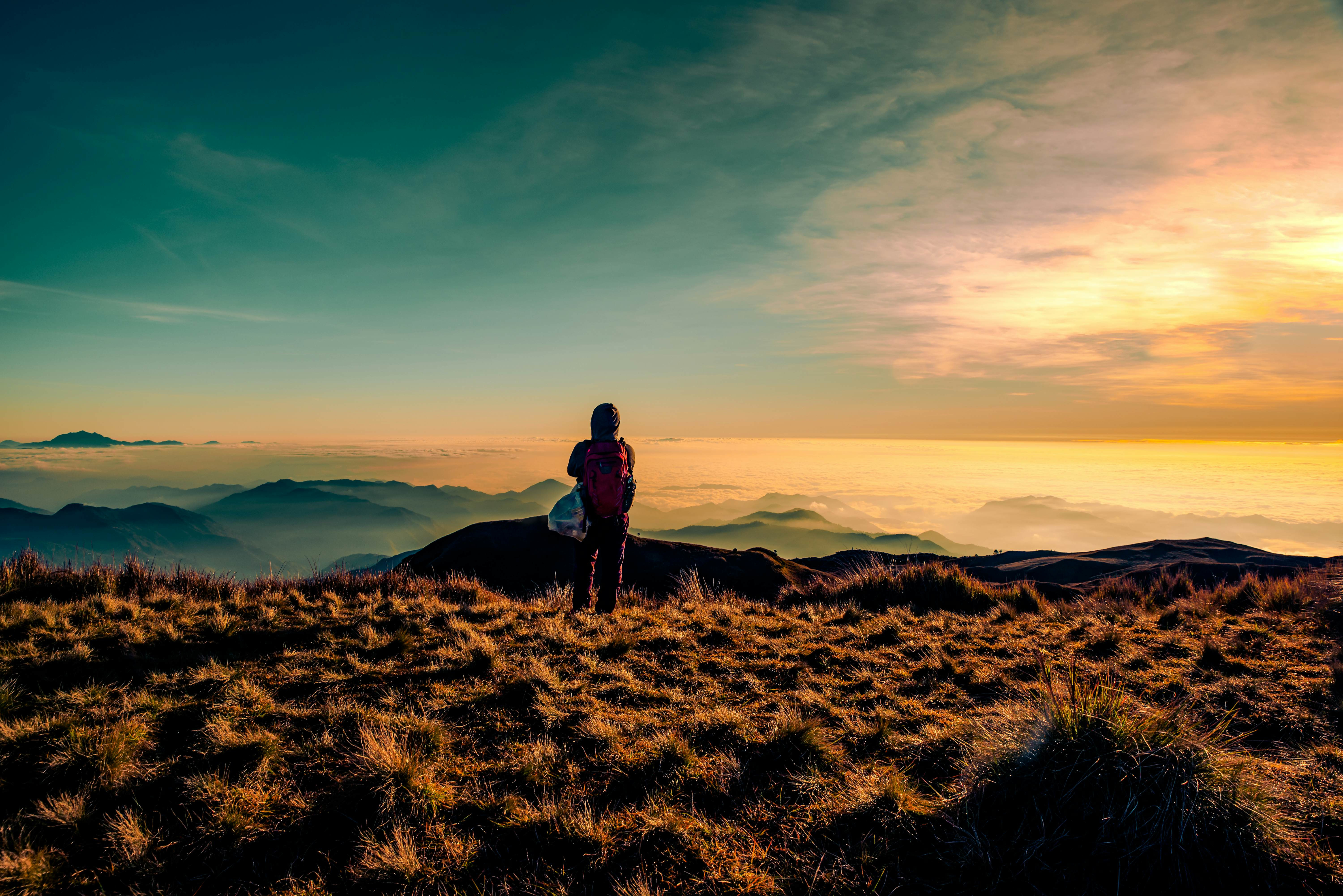 An adult mountaineer standing at the peak of Mt Pulag enjoying the breathtaking view of sea of clouds during sunrise.
An adult mountaineer standing at the peak of Mt Pulag enjoying the breathtaking view of sea of clouds during sunrise.
8. How Does The Monsoon Season Affect Travel In The Philippines?
The monsoon season in the Philippines, which runs from June to November, can significantly impact travel plans. The country experiences two main monsoon seasons:
- Habagat (Southwest Monsoon): Brings heavy rainfall and strong winds, particularly affecting the western parts of the country.
- Amihan (Northeast Monsoon): Brings cooler temperatures and less rainfall, mainly affecting the eastern regions.
During the monsoon season, expect:
- Increased rainfall: Flooding and landslides can occur, especially in low-lying areas and mountainous regions.
- Typhoons: The Philippines is prone to typhoons, which can cause disruptions to transportation, power outages, and safety concerns.
- Rough seas: Ferry services and boat trips may be canceled or delayed due to strong waves and inclement weather.
Tips for traveling during the monsoon season:
- Monitor weather forecasts: Stay informed about potential storms and adjust your itinerary accordingly.
- Choose accommodations wisely: Opt for hotels and resorts in safer areas with good drainage systems.
- Pack appropriate clothing: Bring rain gear, waterproof bags, and quick-drying clothes.
- Consider travel insurance: Ensure your travel insurance covers trip cancellations and medical emergencies.
9. What Are The Top Tourist Destinations In The Philippines?
The Philippines boasts a wide array of tourist destinations, each offering unique experiences.
Here are some of the top places to visit:
| Destination | Region | Highlights |
|---|---|---|
| Boracay | Visayas | Famous for its white-sand beaches, crystal-clear waters, and vibrant nightlife. |
| Palawan | Luzon | Known for its stunning landscapes, including the Underground River, El Nido, and Coron. |
| Cebu | Visayas | Offers a mix of historical sites, beautiful beaches, and adventure activities like canyoneering and diving. |
| Manila | Luzon | The capital city, featuring historical landmarks, cultural attractions, and bustling urban life. |
| Siargao | Mindanao | A surfer’s paradise, known for its legendary Cloud Nine wave and laid-back island vibe. |
| Baguio | Luzon | A mountain city with cool climate, pine forests, and flower gardens. |
According to the Tourism Promotions Board Philippines, these destinations attract a diverse range of visitors, from beach lovers and adventure seekers to culture enthusiasts and history buffs.
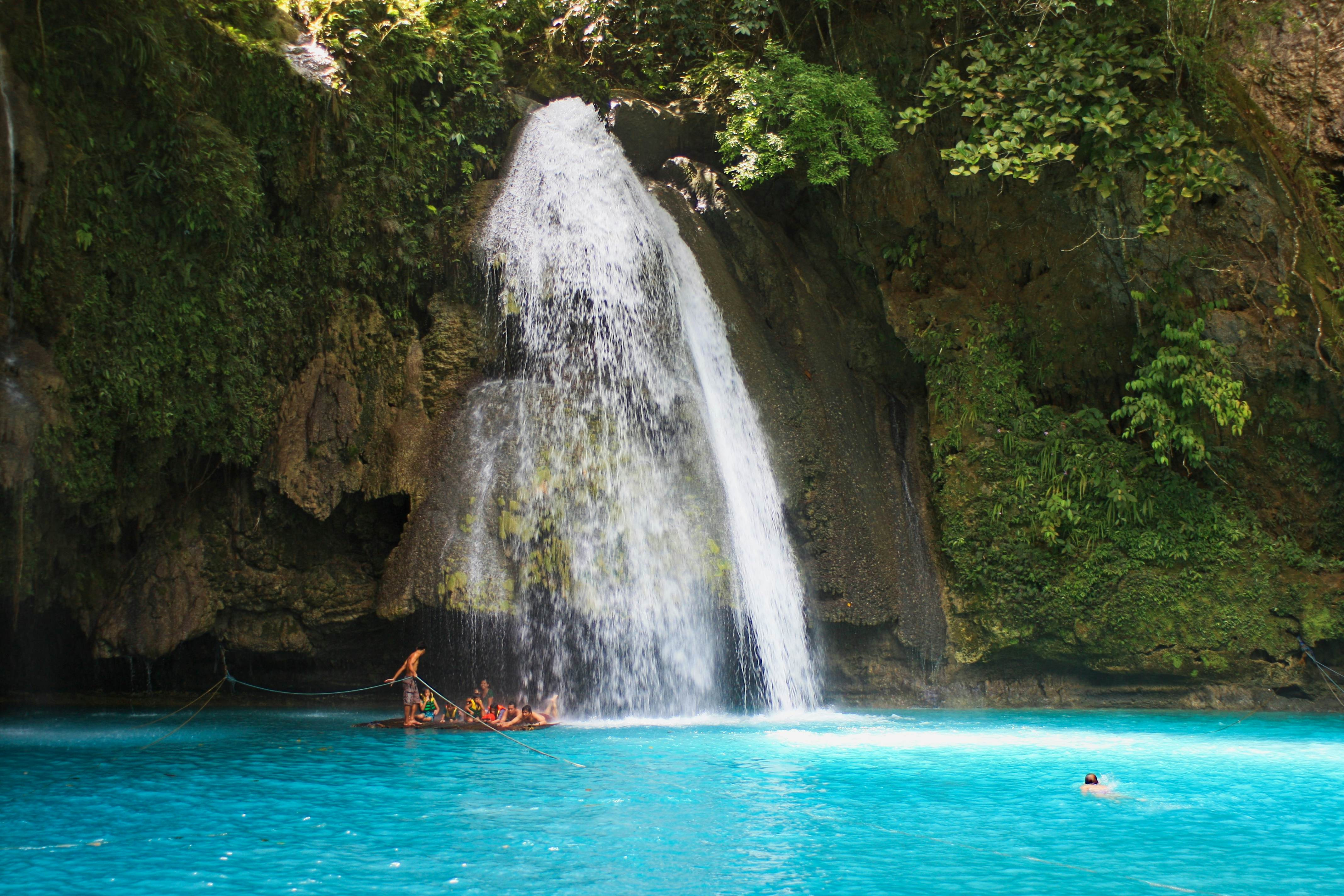 People swim in a blue lagoon at the base of a tall waterfall, which falls down a slope covered with greenery and rocks
People swim in a blue lagoon at the base of a tall waterfall, which falls down a slope covered with greenery and rocks
10. What Are Some Tips For Planning A Trip To The Philippines?
Planning a trip to the Philippines can be an exciting but also daunting task. Here are some essential tips to ensure a smooth and enjoyable travel experience:
- Book in Advance: Secure flights and accommodations early, especially during peak season.
- Check Visa Requirements: Ensure your passport is valid for at least six months beyond your intended stay, and check if you need a visa.
- Pack Appropriately: Bring lightweight, breathable clothing, swimwear, sunscreen, insect repellent, and comfortable walking shoes.
- Stay Connected: Purchase a local SIM card for easy communication and internet access.
- Learn Basic Phrases: Knowing a few basic Tagalog phrases can enhance your interactions with locals.
- Be Mindful of Customs: Respect local customs and traditions, such as dressing modestly when visiting religious sites.
- Stay Safe: Be aware of your surroundings, avoid walking alone at night, and keep your valuables secure.
- Stay Hydrated: Drink plenty of water to avoid dehydration, especially in hot and humid weather.
- Try Local Cuisine: Sample Filipino dishes like adobo, sinigang, and lechon to experience the country’s culinary delights.
- Be Flexible: Embrace the unexpected and be open to adjusting your plans as needed.
SIXT.VN can help you streamline your travel plans with our comprehensive services, including airport transfers, hotel bookings, and guided tours. We ensure a hassle-free experience, allowing you to focus on enjoying the beauty and culture of the Philippines. Address: 260 Cau Giay, Hanoi, Vietnam. Hotline/Whatsapp: +84 986 244 358. Website: SIXT.VN.
FAQs About When To Travel To The Philippines
1. Is it safe to travel to the Philippines during the rainy season?
Yes, it is generally safe, but you should monitor weather forecasts and avoid areas prone to typhoons.
2. What should I pack for a trip to the Philippines?
Lightweight clothing, swimwear, sunscreen, insect repellent, and comfortable walking shoes are essential.
3. Do I need a visa to enter the Philippines?
Many nationalities can enter the Philippines visa-free for a certain period. Check the specific requirements based on your citizenship.
4. What is the local currency in the Philippines?
The local currency is the Philippine Peso (PHP).
5. What are some must-try foods in the Philippines?
Adobo, sinigang, lechon, and halo-halo are popular Filipino dishes.
6. How can I get around in the Philippines?
Jeepneys, buses, taxis, and ride-hailing apps are common modes of transportation.
7. What are some cultural etiquette tips for visiting the Philippines?
Respect elders, dress modestly in religious sites, and be mindful of local customs.
8. Are credit cards widely accepted in the Philippines?
Credit cards are accepted in major establishments, but it’s advisable to carry cash for smaller businesses and remote areas.
9. What is the best way to stay connected in the Philippines?
Purchase a local SIM card for affordable internet access.
10. What are some eco-friendly practices to follow while traveling in the Philippines?
Reduce plastic use, respect wildlife, and support local communities by buying local products and services.
SIXT.VN: Your Partner for Unforgettable Philippine Adventures
Planning a trip to the Philippines involves considering various factors, including the best time to visit for specific activities, weather conditions, and budget considerations. SIXT.VN is here to simplify your travel planning, offering a range of services to ensure a seamless and memorable experience.
Our services include:
- Airport Transfers: Enjoy hassle-free transportation from the airport to your accommodation.
- Hotel Bookings: Choose from a wide selection of hotels to suit your preferences and budget.
- Guided Tours: Explore the Philippines with expert guides who can provide valuable insights into the country’s culture and history.
- Customized Itineraries: Tailor your travel plans to match your interests and preferences.
Don’t let the challenges of planning a trip to the Philippines overwhelm you. Let SIXT.VN take care of the details, so you can focus on creating unforgettable memories. Contact us today to start planning your dream Philippine getaway! Address: 260 Cau Giay, Hanoi, Vietnam. Hotline/Whatsapp: +84 986 244 358. Website: SIXT.VN.



